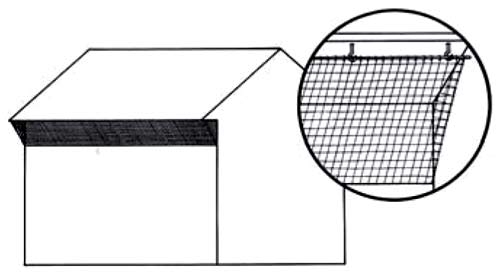[Article originally appeared in the November 2014 issue of the Retail Nursery & Garden Center IPM News]
![Figure 1. Damage caused by cliff swallows and their nests. [Photo by W. Paul Gorenzel] Figure 1. Damage caused by cliff swallows and their nests. [Photo by W. Paul Gorenzel]](http://ucanr.edu/blogs/UCIPMurbanpests/blogfiles/26784.jpg)
Laws Protecting Birds
Some birds that nest on dwellings may be protected under the Migratory Bird Treaty Act and Endangered Species Act. These laws prohibit the trapping, possession, or killing of listed species and their parts (eggs, nests, feathers, etc.) without a permit. Generally there must be a good case to justify a permit and the permit process can be time consuming. For all permit requirements, contact your state's main office of USDA-APHIS Wildlife Services.
Before any exclusionary methods are enacted, it is important to correctly identify the bird species and understand its biology and migrating/nesting season. Removing nests of protected birds must be timed according to their migration departure. Once the birds have migrated and vacated their nests, it is safe to remove them and take measures to prevent future unwanted nesting.
When it is safe and appropriate to remove the nest, wear personal protective gear such as gloves, a dust mask, and coveralls or similar clothing to protect against contamination from fleas, mites, bacteria or other parasites that may be associated with the nest.
Physical Exclusion
Exclusion refers to any control method that denies physical access to the nest site area and is a relatively permanent, long-term solution to the problem. In California, a permit is not required for this method if it is done before the birds arrive, during nest building when there are no eggs or young in the nest, or after the birds have left for the winter.

If a plastic net is used, it should be attached so that it can be pulled taut. This prevents flapping in the wind, which looks unsightly and results in tangles or breakage at mounting points. The net should not have any loose pockets or wrinkles that could trap and entangle birds.
Bird netting and other materials mentioned above are available at many hardware and farm supply stores as well as from Internet sources. Extensive netting may be a bigger task than some homeowners want to assume, especially if it involves a two-story building. In this case, it may be advisable to call a bird control professional.
Frightening Devices
Models of hawks, owls, and snakes are sold at many garden centers, but these devices are ineffective. Plastic twirlers or windmills fastened to the eaves, and aluminum foil or brightly colored plastic strips hung from above repel by movement and reflection and have been used with inconsistent success. Various other gadgets or frightening devices are marketed for birds, some with limited success. Once established, birds such as woodpeckers are persistent and are not easily driven from their territory or selected pecking site.
For more detailed information about installing netting, see UC IPM Pests Notes: Cliff Swallows and Woodpeckers.
For legal and permitting information about birds and other wildlife visit the California Department of Fish and Wildlife web site and the USDA-APHIS Wildlife Services.
[Excerpted with modifications from UC IPM's Pest Notes on Cliff Swallows by Salmon and Gorenzel and Woodpeckers by Salmon, Whisson and Marsh.]
Author - Associate Director for Urban & Community IPM/ Area Urban IPM Advisor